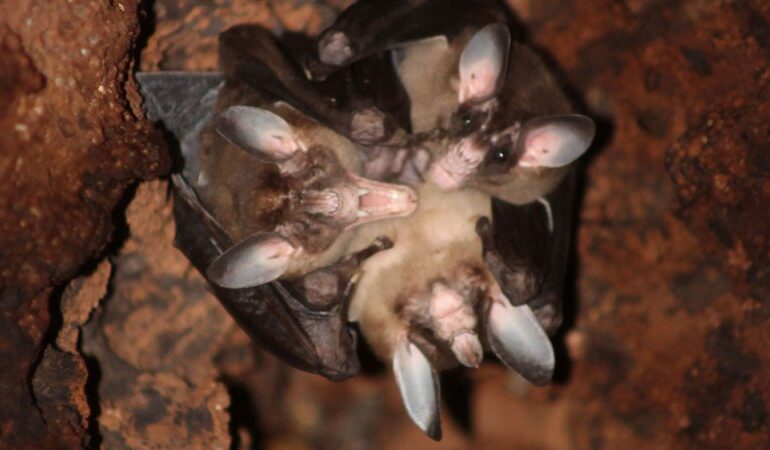Carnivorous Bats Exhibit Affectionate Behavior in Costa Rica

Recent findings in Costa Rica have unveiled fascinating social behaviors among the world’s largest carnivorous bats. Researchers utilized infrared cameras to observe these bats engaging in affectionate behaviors such as hugging and cuddling, as well as sharing food with each other. This study sheds light on the complex social dynamics of these often-misunderstood creatures.
Insight into Bat Behavior
The research, conducted by scientists from the University of Costa Rica, highlights how these bats maintain close social bonds. The infrared footage revealed that the bats employ wing wraps as a form of social interaction. This behavior not only fosters intimacy among individuals but also strengthens their social networks.
Bats are typically known for their solitary nature; however, this study challenges that perception. The researchers observed that these bats often gather in groups, showcasing their ability to form tight-knit communities. By sharing prey, they reinforce these relationships, demonstrating a level of cooperation that is remarkable for a species primarily identified as predators.
Implications for Conservation
Understanding the social structures and behaviors of carnivorous bats has significant implications for their conservation. As habitats continue to face threats from deforestation and climate change, knowledge of their social interactions can inform better strategies for protecting these animals. Conservationists can leverage this information to create environments that support the natural behaviors of these bats, ensuring their survival in the wild.
The infrared technology used in this study represents a breakthrough in wildlife research. Such tools allow scientists to gather data without disturbing the animals, providing a clearer picture of their natural behaviors. As the study continues, further insights into the lives of carnivorous bats are expected, paving the way for enhanced conservation efforts.
These findings not only enrich our understanding of bat behavior but also emphasize the need for ongoing research into the social lives of wildlife. By recognizing the complexities of their interactions, we can appreciate the vital roles these creatures play in their ecosystems.






